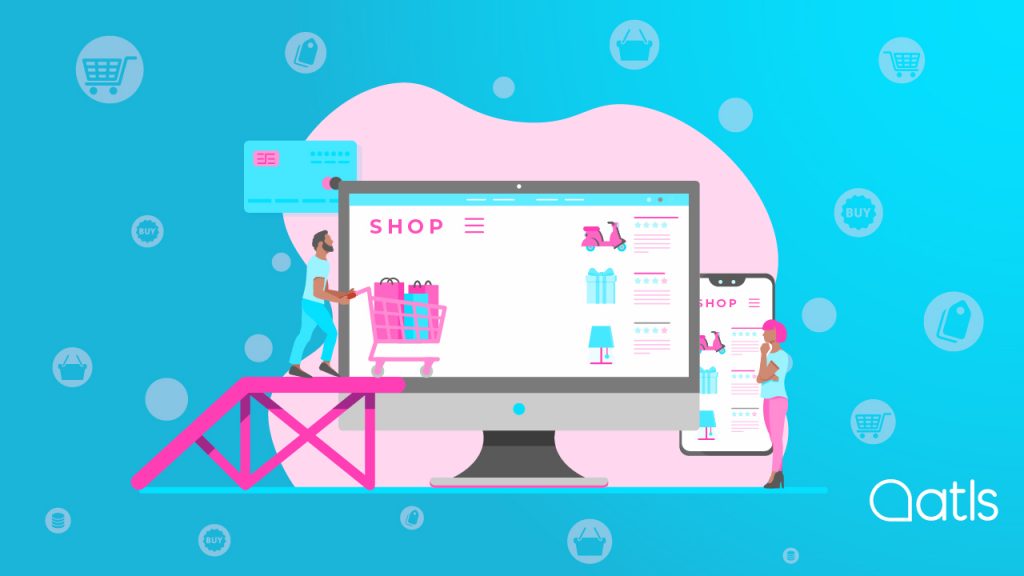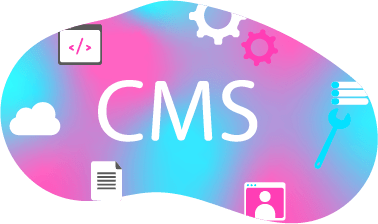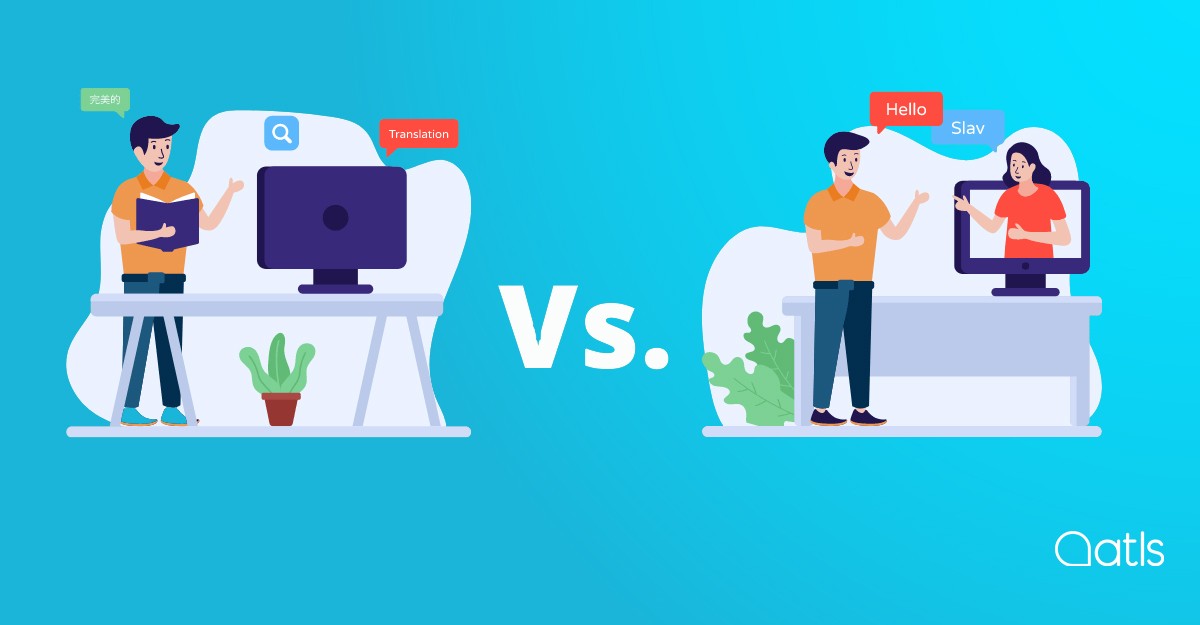How to translate e-commerce in order to expand your business internationally

Article keywords: Translating an e-commerce site, localising an online store, Search Engine Optimisation (SEO) of an e-commerce site, translating PrestaShop, translating Magento, translating Shopify, translating WooCommerce.
We live in an increasingly globalised world and that "forces us" to consider the possibility of translating our e-commerce sites in order to reach new markets. But how can we make sure that the translation is effective and successfully connects with our target audience? We are here to help you learn the best practical tips and the most useful tools to take your business to the next level!
Discover how to translate an e-commerce site
- E-commerce translation: why is it important?
- Benefits of translating an e-commerce site
- Localisation of an online store: acts as a local brand
- What are the benefits of translating and localising an e-commerce site?
- How to translate your e-commerce site: step by step
- Professional e-commerce translation system
- SEO optimisation when translating your online store
- Do you want to translate your e-commerce site?
Translating an e-commerce site: why is it important?
As a general rule, when consumers access an e-commerce site, they always prefer to carry out a purchase in their mother tongue as it gives them security and confidence in the product or service on which they are going to spend their money. According to a study by the American consulting firm CSA Research, 67% of internet users prefer to shop on websites in their mother tongue. A sufficiently large figure worth taking into account. This is the main reason why you should consider not only translating your e-commerce site, but adapting it to the market you want to target. In the world of translation, we call it content localisation. If you don't have it translated into all your target languages, you are likely to lose many potential customers. But be careful: make sure that the quality of the content is professional in order to preserve your brand image and communication style.
Dedicating part of your capital investment to translating your e-commerce site will always be beneficial: it improves the user experience, increases the confidence of potential customers and improves visibility in other countries' search engines. All this will result in an increase in qualified traffic to your website and increase your sales, thus providing you with well-deserved international success.
Benefits of translating your ecommerce
Failure to translate websites properly can be significantly detrimental to companies seeking to expand into international markets. Language barriers are one of the main causes of user interruption during the purchasing process. Therefore, language can be an obstacle when carrying out purchases on an e-commerce site.
To succeed in the current competitive international market, it is important that companies adopt a strategic approach that goes beyond the local market. An effective way to achieve this is by creating a multilingual website.
Translating the content of the company's website can help to meet market expectations and increase sales. For example, if you find two similar products with the same price on the Internet, where would you prefer to purchase it? On site A, which has unclear, unnatural and uncreative language, or on site B, where you feel comfortable reading the brand values and understanding the product description? The answer is obvious, right?
While there are other important factors to take into account in the purchasing decision, the text is a crucial factor. Therefore, when translating an e-commerce site, it is essential to know your target audience and answer questions such as: which country or city do I want to target? What are the market needs there? Do they speak more than one language? When considering these questions, you can decide how best to communicate with your target audience by translating your e-commerce site. Undoubtedly, translating an e-commerce site can significantly boost business in the international market. Below, we have listed the most important points to consider when translating your e-commerce site:
- Your brand's audience will be wider: in the digital world, if you want to grow, it is essential to break down language barriers and reach a public that is far from your usual market. All this is due to the accessibility of e-commerce and the number of international purchases you can make in just one click, from wherever you want, at whatever time you want.
- Enhance your brand image and increase the trust of your potential customers: the aim is to make your customers feel "at home" with your brand, i.e., to make them feel at ease. So the same happens when a user accesses your online store and sees that they have the option of reading the content in their mother tongue: they will browse more securely, knowing what they are looking for at all times and how to do it. This will score your business points against the competition when it comes to connecting with your audience and making them feel more in tune with your brand: the customer values it and thanks you in the form of a purchase, which is what interests you.
- Improved SEO (organic positioning): by translating your e‑commerce site, you will be promoting your business in the local SERP of the area you want to target. Whenever a user makes a query about a service or product that has to do with your business, your e-commerce site will appear in the search engine, as you will be visible in those languages and regions. How is it possible to do so with all the odds stacked against you? With international SEO. In other words, by researching keywords by target region and integrating them into the translation. Secondly, by giving the URL an optimal format so that it can be identified by local search engines (e.g.: www.tuweb.com/es for Spain, but www.tuweb.com/fr for France) and offering relevant and valuable content to visitors from the regions to which the translation is targeted. This way, you will help them stay longer on your online store, and in turn making possible purchases.
- Increase in the sales and conversion rate of your e-commerce site: according to a number of research studies, users always prefer to shop in their local currency and this is supported, for example, by a study carried out by PayPal, which found that 63 % of online shoppers prefer to pay in their own currency. This already hints at the importance of not only translating our website, but also localising it in order to adapt all the elements to the target market. If you trust the localisation of your website to a professional translation company, your international sales will be boosted as if by magic.
- Expands your customer base: translate your online store = more potential customers. We've already made this clear, right? You must focus your strategy to decide which languages you will translate your e-commerce site into. English is a good place to start with internationalisation, but if you are targeting certain markets you need to make sure that these languages are available on your website.
- Select the languages that are suitable for your internationalisation: once you are clear about which markets you want to expand into, you can choose which languages to translate your online store into. Today, the most popular are English, Spanish, French, German, Portuguese, Mandarin Chinese and Arabic. There is no need for you to translate your e-commerce site into all these languages, simply those which will really help you with your expansion strategy. Choosing the correct languages is key.
- It improves your visibility in search engines: ultimately, if you are not on the first page of Google (or other search engines, depending on the market) then you don't exist. This is a reality, however much it pains us. For this reason, you must fight to be on the first page and increase the chances of your potential customers finding you. SEO is a strategy that you must take into account in this process of internationalisation. In addition to translating your e-commerce site, metadata must also be available, as well as organising and structuring the content so that search engine robots can index it easily. If Google recognises you and detects that you have high-quality, well-translated content, it will reward you with visibility. Sounds good, right?
- Reducing bounce rates and improving conversion rates: you must keep this in mind when you have an online store. To achieve these two objectives, you must invest in a multilingual site. What does this involve? Reducing the bounce rate, as foreign users will stay as long as possible and this will influence the improvement of the conversion rate.
- It optimises your brand image: it is very difficult to stand out from the competition, but it is not impossible. An effective strategy involving the translation of your online store, thus creating a multilingual website, is something that users will value highly when choosing you. It creates a sense of security and a more globalised brand image.
- Increases international competitiveness: by translating your content into your audience's languages, you will be ahead of the competition, gaining an advantage and moving up in the ranking of brands chosen by potential customers worldwide.
- It offers a great brand experience: when a customer feels that they are well looked after, it is easier for them to enter into a more relaxed and pragmatic mindset when it comes to making a purchase with greater confidence. Customer connections increase when you speak their language, so you can quickly make the most of your e-commerce investment.
Localisation of an online store:acts as a local brand
It's easy to confuse the terms "localisation" and "translation". Translation is the process of communicating a message in another language (different language to the source language). Although translation is an essential part of creating a global e-commerce site, localisation goes beyond this, as it takes into account the cultural context of the customers and ensures that they can use the website easily.
What does localisation of an e-commerce site mean exactly?
The localisation of an e-commerce site involves placing words and other visual elements in their appropriate cultural context: colours, symbols, dates, hours, etc. When engaging with other cultures, a basic concern is not to offend our customers. For example: in Europe, it is socially acceptable for fashion models to wear clothes that reveal their skin. However, this is not the case for the Middle East. If photographs that may be considered offensive are published, the customer will leave the site, and you will lose a sale. For this reason, when it comes to translating an e-commerce site, it is essential to take into account the cultural and linguistic differences that exist between the different markets. It is important to respect the cultural sensitivity and preferences of consumers in each country in order to offer a successful shopping experience.

What are the benefits of translating and localising an e-commerce site?
Today, localisation is a requirement for all e-commerce sites that seek to expand globally. Listed below are the details of the main benefits:
You compete on a level playing field with local businesses
Do you want to reach a local population in a specific market? The key is to thoroughly understand your potential customers! Local retailers have an advantage (which you will have now too), as they know exactly what their customers need.
Research the market and adapt your message to meet the specific needs of each region. If you take advantage of cultural specificities, you can stand out from the competition. For example, in China, Singles' Day is a very important shopping event. If you focus on localising your e-commerce site for that market and offer exclusive discounts, themed ads and appealing brand messages, you will have a competitive advantage.
You will create a memorable user experience
Don't underestimate the power of localisation! According to a survey by the consultancy firm CSA Research, 30% of Internet users do not buy on websites that are only available in English. Therefore, translating your e-commerce site into different languages doesn't seem like such a bad idea, although you should take into account that only localisation will make your customers feel at ease on your online store. When you put your customers' needs and preferences first, you brand builds trust and loyalty. If you show that you understand their purchasing behaviour and personalise the user experience, your customers will be more likely to buy again on your site and, with time, will become loyal customers. Don't miss out on the opportunity to differentiate yourself from the competition and offer a memorable user experience.
You will optimise incident management
How many times have you had problems with customer support? Often, the root of the problem is lack of communication. The customer may not be able to understand all the information included in the product description or there may be a discrepancy between the information and the display. This issue will be resolved thanks to localisation! When your e-commerce site is localised, your customers fully understand every step of the buying process. In addition, the localised reviews are a powerful tool for building trust among your local customers. With localisation, you can reduce customer support incidents and make sure that each customer enjoys an incident-free shopping experience.
Sections to be translated from an online store
The translation and localisation of your online store requires careful planning. This starts by determining which elements of your e-commerce site should be translated.
About us
The key to ensuring a positive experience on your website is to ensure that each section is carefully translated, including important sections such as "Who we are", "The Team", "Our Story" and "Contact Us". This way, users will feel like you are committed to providing them with a personalised experience and will feel at ease on your website. Don't let a bad translation drive your future clients away!
Translating categories and product pages
Product categories are useful for the user to explore the shop and find the items they need, for example, when you enter an online women's fashion shop and look in the "skirts" section to find all the items that belong to this category. On the other hand, product pages provide detailed information such as characteristics, price and technical specifications.
If these categories and pages are not perfectly translated, potential customers will quickly leave your site, leaving the shopping cart empty and will not return. We don't want that!
Translating the return policies, cookies and legal notices
It is essential that the pages where the rights and responsibilities of the users and online store are described are accessible and understandable in all the languages into which you want to translate your e-commerce site. If these sections are not correctly translated, users may have problems understanding the conditions of use, creating a sense of mistrust towards your online store. In addition, the lack of clear and accessible legal information in the user's language may be a violation of consumer protection regulations. Therefore, it is crucial that all legal pages, such as the return policy and cookies, as well as any other important pages related to the use of the online store, are perfectly translated.
Translating the shopping cart and payment gateway
The shopping cart page is where the products that the user has selected are displayed and where the transaction will conclude. It is essential that this page is translated so that users can clearly view the details of their purchase, including the total cost and any other additional costs.
The payment gateway is where payment details are indicated, such as the credit card number and billing address. This must be properly translated so users can enter payment details without any problems and avoid confusion or errors.
This way, you guarantee that users can pay for their purchases without problems and securely, regardless of the language they use.
Translating automatic emails
Actions, such as purchase, shipping or payment confirmation emails, are automatically sent to the user. If they are not translated, users who are not proficient in the language in which they are sent may have difficulty understanding them, which can lead to confusion or misunderstandings in the message you want to convey to the user. These emails are an opportunity to establish a relationship of trust with the customer, so it is essential to word them appropriately and adapt them to the user's language so that they feel comfortable and confident when interacting with your online store.
Translating product descriptions
Product descriptions are one of the most important parts of an e-commerce site, as they are a key tool when making the decision to add a product to the shopping cart. In addition, you should bear in mind that search engines take the product description into account as a decisive element when choosing which products to better position. If this part is not translated, a great opportunity for winning over the customer will be lost. Product descriptions must clearly explain their characteristics, specifications and benefits.
Translating images
If your online store's images contain text, it would be useful to translate this text so as not to mislead the user and to improve SEO. What kind of images do we mean? Posters, banners, graphics, diagrams, etc. You must also take into account, as we have previously stated, that the images must be appropriate for the audience of each target market. If you operate in multiple countries and offer products in different languages, the images must be adapted to the cultural needs and expectations of the users of each country.
Here is a step-by-step guide to translating your e-commerce site
The time has come to ask the million-dollar question: what is the magic formula for successfully translating an e-commerce site? These are the steps you need to follow to make sure you reach the desired target audience as a business and thus increase your sales:
- Select the target language(s): once you are clear about the international market(s) you want your e-commerce site to expand into, you need to translate and localise your site into the local language in order to attract the attention of potential customers in these markets.
- Employ a professional translation company: if you want your e-commerce site to be successful, look for a trusted company that will help you with the translation and localisation of the entire online store. Verify that the company in question has native translators with extensive knowledge of the culture and terminology of the language you are translating into. It is also important for these translators to be familiar with your sector. This will make translation much easier.
- Proofread the translation: Make sure that the translation sent by the translation company you have hired is accurate and consistent with your company's image and identity. Verify that the technical terms and keywords have been translated correctly.
- Carry out performance tests: check that the entire translated part of your e-commerce site works properly. Browse as though you were the customer to ensure they can browse effortlessly.
- Keep translations up to date: don't forget any translations. Update and translate any new content you add to the website.
Which CMS is easiest to translate?
As you know, there are different content managers, some easier to translate than others, but that's the truth. We will explain the advantages and disadvantages of each one, so you can have a wide range of options available to you to help you decide which one to choose before creating your online store. The most popular are:
- PrestaShop: it's one of the most famous. This open-source CMS is very easy to use and allows you to translate your online store into multiple languages.
- WooCommerce: this is a WordPress plugin that gives you the option of converting your website into an e-commerce site. It also offers many plugins to translate it.
- Shopify: this CMS is one of the most popular in the world thanks to its simplicity and versatility. It has a wide range of tools that make it easier for your online store to be translated into several languages.
- Magento: it is one of the most widely used CMSs by large companies that need a scalable and customisable platform for their online store. Although it can be more complex than other CMSs, it is very easy to translate into several languages.
Now, we're going to look at the different CMSs in more detail so that you get all the necessary information, and you can choose the one that suits you best to successfully create your international online store.
Translating PrestaShop
Its installation is quite simple for someone who does not have much computer knowledge, so, if this is the case, you can install it through the cPanel control panel, available on your hosting server.
Advantages of PrestaShop
- It has an extensive, active and collaborative community that provides quick solutions to any problem or incident that arises when using it.
- Compatibility of payment methods: the main payment methods, such as bank cards, PayPal, Stripe, Bitcoin, Apple and Google Pay and Bizum, are compatible with this platform. In addition, you can also use the Redsys module for PrestaShop, among others.
- The support provided by PrestaShop is really good thanks to its detailed documentation and the large number of resources available. This makes it easier to use all the functions and options it offers.
- Multilingual platform: it facilitates sales to other countries by enabling the implementation of different languages on the online store. This means that users in a specific country can automatically access the store in their mother tongue.
- Manages multiple businesses: you can manage several online stores from a single panel with PrestaShop. This helps you simplify and streamline the management process.
- SEO positioning: when implementing SEO in your PrestaShop online store, you increase the chances of appearing on the first Google results pages.
- Manage large numbers of items seamlessly within PrestaShop without affecting business performance.
- Highly adaptable customisation: it allows you to create various types of online stores through modules and templates. Templates offer a professional design that can be adapted to mobile devices and tablets to increase online sales.
- Free: an open-source platform which allows for the development of professional online stores without having to pay for a licence. When using PrestaShop for professional projects, economic investment is reduced considerably. And what's more, it's even free.
- Easy to use: one of the most important advantages of PrestaShop is that you don't need technical skills to master this tool.
Disadvantages of PrestaShop:
- It is difficult to use compared to other platforms: the large number of options and settings make it more complicated than other platforms such as Shopify or WooCommerce.
- Advanced modules are subject to a fee: while there are many free features, the more advanced ones come at a cost, which means that if you want to invest in more modules, you will have to invest more money.
- Limited templates: it has a limited range of themes compared to the rest of the platforms.
- Not recommended for a marketplace: its performance is seriously affected when you add more than 10,000 items, so it is recommended to use Magento instead.

Translating WooCommerce
This WordPress plugin has, like the rest, its advantages and disadvantages:
Advantages of WooCommerce:
- Free: it is an HTML, CSS, PHP and JS code package that is installed on the server free of charge. When you open it on the WordPress website, everything works automatically and all you have to do is upload a product and connect a payment gateway. Furthermore, as it is open-source, you can modify the basic files according to the specific needs of the online store.
- It is adaptable to your online store: it allows you to fully customise the aesthetic aspect of your e-commerce site. This feature is mainly aimed at non-technical users, as a lot of customisation can be achieved from the dashboard of your website, depending on the template or page builder you use.
- Flexibility: you can sell tangible products with stock available for delivery, downloadable digital products or simply show a catalogue of products without permitting purchases. You can also create a marketplace where other vendors can sell their products in your store. You can just as easily offer subscription services with different web privileges. You can even connect your store to a supplier and use the dropshipping business model. All this is achieved through plugins that are tailored to your specific needs. WooCommerce fully adapts to your business model and to all types of products you want to sell online.
- Opportunity to automate processes: WooCommerce is a good option if you use online marketing funnels to control the entire process, from attracting potential customers to sending a discount after the first purchase.
- Visualisation of an online store: this has recently been added to WooCommerce and is really valuable when it comes to getting your online store off the ground.
- It can be expanded through plugins and extensions: much more can be achieved by adding third party extensions that integrate seamlessly with this platform.
Disadvantages of WooCommerce:
- Some functions are subject to a fee: this seems to contradict the first advantage of this section. Although it's true that it's free, if you want to add extra functions, you will have to pay for them.
- More plugins and extensions impair its functionality: if you want to use features that are not supported by WooCommerce, you may have problems with the performance of your online store
Translating Shopify
This is a platform that has gained popularity over the years.
Advantages of Shopify:
- You don't need to have any programming knowledge: this is its biggest advantage.
- It already has SEO integrated: all Shopify plans that you sign up for have marketing tools included to help you with SEO, although, it is always necessary to carry out a number of actions in order for the website to be well positioned.
- Free SSL certificate integrated: this provides extra security and confidence to your e-commerce store, ensuring that users can connect securely.
- It facilitates a multilingual e-commerce site: considering that the idea is to internationalise your store, this is one of the great advantages of Shopify.
- Customisable themes: it is essential to give the customer a much more satisfying visual experience on your online store. Shopify gives you templates to do so.
- You can sell as many products/services as you like: it has a high storage capacity.
- Advanced analytics within Shopify: it offers you analytics and performance reports about your e-commerce site.
- Currencies from around the world: it supports currencies from around the world, in case you sell to other countries.
- Anti-fraud system: all Shopify plans offer this.
- Existing payment gateways installed: they already come configured with all the plans, so you have one less thing to worry about.
- You get 24/7 support: if you need assistance, Shopify takes care of you 24 hours a day. This is something that we can all appreciate.
Disadvantages:
- You do not fully own it: even though you set up your online store with Shopify, it's not 100% yours, as it depends largely on them.
- Problematic scalability: is not the right platform to grow as a company.
- Customisation is limited: customisation is only possible to a certain extent and many templates are subject to a fee. So, if you need or are looking to give your online store a unique touch, Shopify won't offer you that option.
- It's a little more expensive than the rest: in addition to paying for the plan you choose, you will have to pay commission on every product you sell, modules, functionalities and templates.
Translating Magento
Magento is one of the most widely used content managers by large companies.
Advantages of Magento:
- It is easy to install and use: it is very intuitive when creating your online store. You can use all the platform's features perfectly.
- You can store many products on it: it accepts more than 1 million products and can handle up to 80,000 orders per hour.
- Useful for large companies: as it offers such a large capacity, it is the perfect CMS for large companies.
- It is integrated with other tools: it gives you the opportunity to integrate external tools that can help you to optimise the management of your online store, such as Google Analytics.
- Website positioning: just like PrestaShop, it already has this integrated into its plans.
- High security: an advantage that should always feature when subscribing to a CMS.
Disadvantages of Magento:
- You need to have a hosting server: you must subscribe to a hosting server. Despite being a potential disadvantage, this may even allow you more flexibility and control over your website.
- Expensive: it is one of the most expensive CMSs, because if you really want to build a large online store, you have to buy the Enterprise plan.
Professional e-commerce translation system
At ATLS, we've got a remote access automated solution (AT-RTS) that allows you to order your translations via an API. In other words, you can send content for translation directly from your CMS to our system. Once the translation is completed, it will be returned the same way it way ordered. It's that easy!
Advantages of AT-RTS:
- Facilitates integration with development tools and procedures by automating literal translations.
- Our translators will receive the content directly, which will save time when it comes to translation management.
- The scalability of AT-RTS allows you to add languages easily and quickly.
- Improves the user experience (UX).
- Reduces the launch time on the market.
- It is possible to work with various formatting, including i18n, xml, json, xliff, properties, among others.
- It eliminates human errors caused by file handling.
- It reduces spending.
Translating your WoCommerce online store with WPML
WordPress is the preferred CMS, since more than 60% of websites are made with this content manager. This is thanks to its scalability, open code and the large number of templates and plugins available. However, when it comes to internationalising your website, you can experience certain complications.
There is a great plugin called WPML that resolves all complications. With WPML, you can translate your e-commerce site in WooCommerce easily and quickly, without the need for technical or programming skills. Moreover, thanks to the partnership between ATLS and WPML, the process is even easier.
Why translate WordPress with AT-WPML?
- WPML is the most downloaded plugin for translating WordPress and WooCommerce.
- This process is carried out automatically without the need to extract the text to modify it later.
- The process is extremely easy.
- We have 24 years of experience in the field of translation in its entirety and, more specifically, 15 years of experience in translating WordPress within ATLS.
- We have professional native translators in all languages and who specialise in a wide range of sectors.
Translating your e-commerce site using a semi-automated process
We would have to see which solution best suits your e-commerce site, but for a semi-automatic process, we have a software with proxy technology called AT Website Translator. No matter how much content you produce on your online store, with AT‑WST you will always have your e-commerce site correctly translated into all the languages you want.
This is how it works:
- It allows you to write content in a single language from your CMS without having to worry about anything else.
- Then, the software will automatically detect it and send it to our native translators, who will start managing your translation.
- Once our native translators have finished translating it, the AT-WST will publish the content in all languages on your online store, as well as optimising it for SEO purposes.
What are the benefits?
- All you have to do is generate content in a single language, as it detects the new content and automatically updates it.
- SEO guidelines.
- This technology can be used in payment gateways and restricted areas.
- It eliminates human error.
- Reduced time to market.
- Reduction of internal workload.
- AT-WST is compatible with any CMS.
Translating your online store the traditional way
If you're not a big fan of technology, you can always translate your e-commerce site the traditional way. This includes extracting the texts manually and uploading them to a translation management platform, after which you will receive an immediate quote and, if you accept it, our translators will get to work to get it to you as soon as possible.
Once the translation is complete, you can download the translated files on our platform and then upload them back to your online store. You should also optimise your SEO with the right keywords and phrases to position your e-commerce site within the top results on Google or the search engine of the market you are targeting.
This involves extra manual work that will certainly take time away from other things that are of more value to your business.
The importance of successfully translating your e-commerce site
At this point, we are sure that we have already convinced you that translation is essential for the success of any e-commerce site. The globalisation of markets and growing competition require you to communicate with customers in their native language, which is crucial to attracting and maintaining their attention.
It is of vital importance to have a professional translation, as this will allow you to clearly and effectively convey messages, which will ensure that customers understand the information about the products and services offered. If the translation is inaccurate or confusing, customers can lose interest in your online store and choose to look for alternatives on competitors' e-commerce sites.
The use of any free automatic translator is strictly out of the question. A bad translation can create a negative impression, suggesting that, as a company, you don't care enough about your customers, or you are not committed to the local market. It is therefore essential to invest in a higher quality translation if you want to ensure the success of your e-commerce site.
SEO translation of your online store: key tips for better positioning your online store.
To ensure that your online store is easily accessible by your potential customers in search engines, it is important to perform a SEO study. Here are a few tips to take into account when translating your e-commerce site:
- In order to improve the user experience and increase the visibility of your online store, make sure that the URLs are SEO-friendly and contain relevant keywords. User-friendly URLs are easier to read and remember for users.
- There are different types of TDLs (top level domains) that you must take into account: generic (.com, .net, .org, .info, .biz, .name), geographical (.us, for the United States, .mx, for Mexico, .ca, for Canada, .uk, for the United Kingdom, among others), sponsored (.edu, education, .gov, government, .mil, military, .aero, airport, .museum, museums, among others) and, lastly, those of a brand (.Google, .apple, .amazon, .bmw, among others).
- If you prefer to use subdirectories instead of a TLD, you must use a clear structure, such as, for example, /es/ for Spanish content, /fr/ for French content and /en/ for English content. You must create unique content relevant to the region and specific language, implement hreflang tags, manage canonical URLs so that there is no duplicate content and search engine optimise the content by translating the meta tags and using internal and external links.
- If you want to implement structured data on a multilingual e-commerce site with subdirectories, you must use ISO language codes, implement structured data in each language and verify structured data testing tools, and update such data when necessary.
- On the other hand, don't forget to translate product descriptions for SEO purposes, all while using relevant keywords, ensuring that each description is unique, using the same tone and style in each language, and considering cultural and regional differences.
- If you have a profile in Google Shopping, you must give it the attention it deserves and translate product descriptions in the different languages of the countries where your products are marketed.
Do you want to translate your e-commerce site?
After reviewing the entire guide, if you want to expand your business and reach new markets, translating your e-commerce site is essential in the digital age we are in. The key to success is choosing a trusted and experienced translation company, such as ATLS. Don't miss out on the opportunity to internationalise your brand and increase your short-term sales. Contact us today to start translating your e‑commerce site and take your business to the next level!
If you want to translate your e-commerce site and need help, don't hesitate to contact us.










